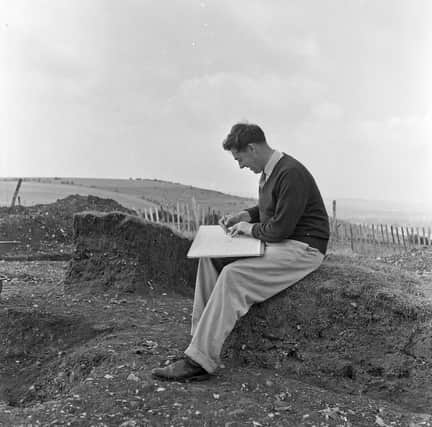Historian spent his life battling to save important old buildings


Mr Dyer, who died last week, taught at several schools in and around the town and wrote dozens of books, including The Story Of Luton, in which he collaborated with John Dony. He was also a campaigner and Luton would have lost even more of its important buildings if it had not been for him.
Mr Dyer led the successful fight to save the town’s oldest building – the Moat House at Limbury, which dates back to 1370 – in the late 1960s. Plans to pulled it down were scrapped and it was convereted into a pub restaurant.
Advertisement
Hide AdAdvertisement
Hide AdBorn in Luton in 1934, he spent much of his wartime childhood at Higham Gobion, near Barton, and was educated at Luton Grammar School.
He then attended St John’s College, York, and gained an MA degree in archaeology at Leicester University.
Mr Dyer taught at schools in Yorkshire as well as at Farley Junior School, Stopsley Junior School and Putteridge Bury College of Education in Luton, and at Harlington Upper School.
He was appointed editor of the Bedfordshire Magazine in 1965 and also edited the Bedfordshire Archaeological Journal as well as writing numerous papers for other archaeological publications.
Advertisement
Hide AdAdvertisement
Hide AdDr Elizabeth Adey, local history curator at Luton’s Wardown Museum for many years, said: “James Dyer was always a fount of knowledge and very supportive as I learnt about the history of Luton.
“Always willing to answer queries and to share his knowledge about Luton’s history and archaeology, he did a tremendous amount to preserve the history of the town and will be missed by many people.”
John Buckledee, former editor of the Luton News and Dunstable Gazette, and now chairman of Dunstable and District Local History Society, said: “James Dyer gave a huge amount of his time to help the News/Gazette whenever we had queries about local history.
“His depth of knowledge was extraordinary, whether we were asking about prehistoric hillforts or the name of a retired Luton schoolmaster.
Advertisement
Hide AdAdvertisement
Hide Ad“His book The Story Of Luton was a constant source of information for the paper’s Yesteryear page. He was an expert on the life of that pioneering Dunstable historian Worthington G Smith and contributed an authoritative article about him for the Dunstable Gazette’s Centenary Souvenir way back in 1965.
“In more recent times he went to an enormous amount of trouble to help with the republication of an early Dunstable history, Dunno’s Originals.
“And when it was decided to reprint the Luton News publication, Luton At War, he happily undertook the task of providing an index for the two new volumes.”
Mr Dyer wrote several books about Stopsley, where he lived for most of his life, and other books included Discovering Prehistoric England, a guide to more than 600 of England’s most interesting prehistoric monuments, and The Penguin Guide To Prehistoric England And Wales. Rhubarb & Custard, his history of Luton Grammar School, was published in 2004.
Advertisement
Hide AdAdvertisement
Hide AdHe was a member of the Royal Archaeological Institute and the Prehistoric Society and served as chairman of South Beds Archaeological Society and Bedfordshire Archaeological Council.
He excavated extensively, organised many digs and found evidence that Julius Caesar came through the site on which Luton now stands with his armies while on his way to Ravensburgh Castle, near Hexton.
During excavations for the Luton News printing works in Castle Street in 1963, he discovered, while sitting on the top deck of a bus, the ditch surrounding the bailey of the castle built by Robert de Waudari in 1139.